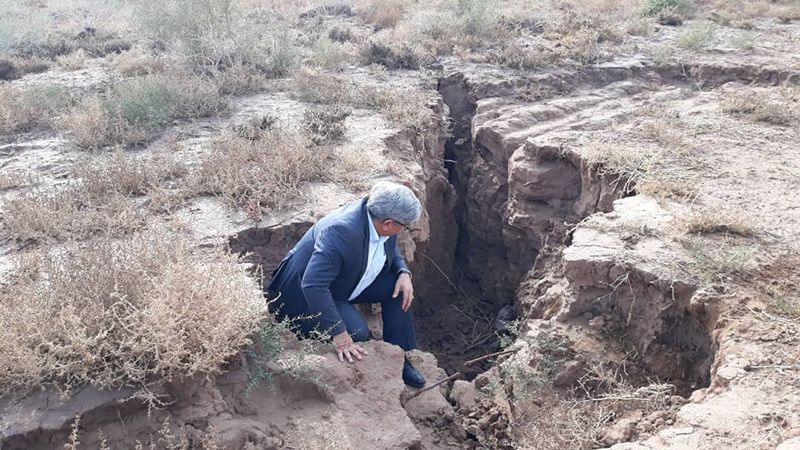December 21, 2018

Tehran is sinking rapidly, as the water in aquifers under the capital is being sucked out far faster than rainfall can replace it, and some buildings are now leaning precariously.
Satellite measurements reveal that some parts of the capital are sinking by as much as 25 centimeters (10 inches) a year; the collapse is now spreading to encompass the city’s international airport.
Geoscientists Mahdi Mo-tagh and Mahmud Haghshenas-Haghighi, both at the GFZ Research Center for Geosciences in Potsdam, Germany, used satellite data to monitor subsidence across the Tehran region between 2003 and 2017. A report on their findings was published November 30 in Nature magazine, one of the world’s most prestigious scientific journals, published in Britain for 150 years.
Previous work had shown that Tehran was sinking and had linked this to the depletion of groundwater aquifers, which are being sucked dry to irrigate nearby farmland and serve greater Tehran’s 13 million residents.
The latest data put new figures on the problem. The western Tehran Plain — a mix of Tehran’s urban sprawl, satellite cities and agricultural land — is subsiding at a rate of 25 centimeters per year, and the Varamin Plain, an agricultural region to the southeast of the city, is subsiding at a similar rate. The city’s international airport — located southwest of Tehran — is sinking 5 centimeters (2 inches) annually.
“These are amongst some of the highest current rates of subsidence in the world,” though not the highest, said Roberto Tomas, an engineer at the University of Alicante in Spain.
Subsidence, caused by growing populations and increased extraction of underground water, oil and gas, is a problem in cities globally. For example, previous satellite measurements have shown that some areas of Jakarta are sinking at more than 20 centimeters (8 inches) per year, and the San Joaquin Valley in central California — home to such cities as Modesto, Fresno and Bakersfield — by up to 60 centimeters (24 inches) per year.
The new study estimates that around 10 percent of the urban area of Tehran is affected, along with many satellite towns and villages to the city’s southwest. “When walking around these areas, we see uneven street surfaces, shifted curbs, cracks in the walls and even tilted buildings, some of which have had to be demolished,” said Motagh.
Huge fissures — several kilometers in length and up to four meters (13 feet) wide and deep — have opened up in the land outside Tehran, some of which are threatening to topple power-transmission lines and buckle railways.
And the growth of underground cracks sometimes produces sudden sinkholes. “One farmer I met was locked up for hours when the ground gave way beneath him and he slid into a six-meter-deep (20-foot) crack,” said Ali Beitollahi, head of engineering seismology at the Building and Housing Research Center in Tehran. Such farmland is becoming unviable, because the cracks drain irrigation water from the surface and leave crops parched.
Surveys carried out over the past year by Beitollahi and his colleagues estimate that the areas with significant subsidence in and around Tehran host 120 kilometers of railway, 2,300 kilometers of road, 21 bridges, 30 kilometers of oil pipeline, 200 kilometers of gas pipeline, 70 kilometers of high-voltage electricity lines and more than 250,000 buildings.
Motagh and Haghshenas-Haghighi’s data show how the subsidence has marched steadily eastwards since 2003, starting with agricultural land and encroaching on the urban fringes of the city. Another subsidence zone is creeping towards Tehran’s airport.
The sinking that has already happened might be irreversible, the study suggests. By looking at water depth measurements from wells in the affected areas, the researchers found that the ground is failing to bounce back, even after rainfall, which suggests that the porosity of the rock has been permanently lost. That loss could lead to more flash flooding, says Linlin Ge, an engineer at the University of New South Wales in Sydney, Australia, because, without pores, the water no longer has anywhere to go.
